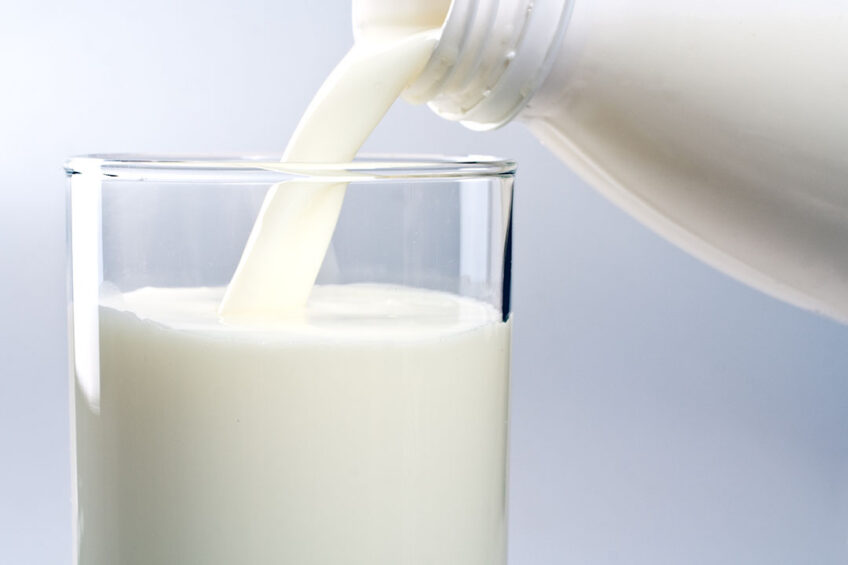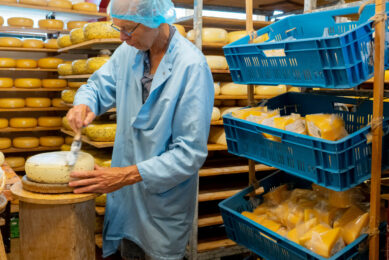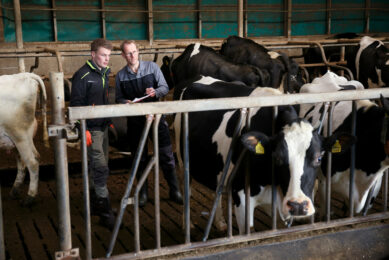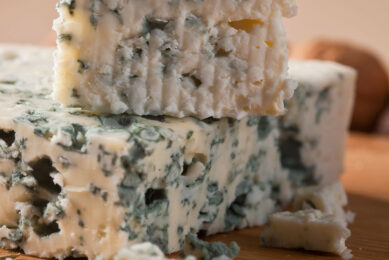Russia’s dairy sector firm in the face of Covid-19

Despite the back and forth of quarantine restrictions in Russia to slow down the spread of the Covid-19, domestic dairy production keeps growing. To some extent, this is associated with state aid.
During the first 9 months of 2020, Russia produced 25 million tonnes of milk, up 2.7% compared to the same period of the previous year, Dmitry Patrushev, the Russian Agricultural Minister outlined during a meeting with Russian dairy companies on 1 November. In 2020, the country’s milk production climbed to around 32 million tonnes and in 2021, an additional 500,000 tonnes will be produced, Patrushev says.
“It is worth noting that the coronavirus-related restrictions have not brought a negative impact on the Russian dairy industry. On the contrary, we see positive dynamics in dry cheese, butter, dry milk and other product categories. We expect these trends to continue,” Patrushev says.

Self-sufficiency level of dairy
Basically, agriculture remained one of the few industries where the coronavirus pandemic has not caused a major interruption. However, Russia has not escaped the worldwide coronavirus recession, with GDP set to fall by around 4–5% this year. This forecast is not final since the second wave of the Covid-19 pandemic has proved to be more widespread and more deadly, pushing regional authorities to impose new restrictions in the hospitality segment.
However, with the achieved growth, Russia is getting closer to surpassing the Russian food security objective, under which the self-sufficiency level of dairy products must be above 90%. In 2020, the Russian Agricultural Ministry estimated this figure at 85%, Patrushev adds.
Subsidies to dairy companies
The Russian government is continuing to focus on the country’s dairy industry during these harsh times, according to Patrushev. In 2020, the authorities allocated RUB10.6 billion ($ 150 million) in the form of subsidies to dairy companies, RUB2.6 billion ($ 30 million) more than in 2019, Patrushev said. Also, another RUB13.9 billion ($ 185 million) was allocated to subsidise interest rates on loans; this figure is also substantially higher than in 2019, Patrushev adds.
Weakening market
The Covid-19 pandemic has sent the Russian ruble’s exchange rate soaring. Since the beginning of the year, the national currency has lost 30% in value, undermining the Russian population’s purchasing power.
According to Sergey Anisimov, director of the Stavropol dairy plant, the currency fluctuations have been a major blow for the company, which has paid for equipment in hard currency purchased under a modernisation campaign in previous years.
“However, for our company, the more important consequence is the total fall of Russian citizens’ purchasing power,” Anisimov says.
Weakening demand
The pandemic has not gone unnoticed in the Russian dairy market. Although there is no exact statistical data, market analysts believe that sustainable production growth has been accompanied by weakening demand. Due to this, dairy products began piling up at the manufacturers’ warehouses.
As of mid-2020, the stocks of butter, milk powder, whey and cheese products in Russia were significantly larger than in the same period of the previous year, according to Natalia Penkova, an analyst at the Institute for Agricultural Market Studies (IKAR). For instance, stocks of skimmed milk powder have increased by 136%.

Dairy stock
“Stocks in the warehouses of dairy processing enterprises are growing primarily due to a decrease in sales through the hospitality channel and a drop in household incomes with the continued growth of production,” says Artem Belov, chairman of the Russian Union of dairy producers Soyuzmoloko.
The stocks of butter hit the four-year record of 22,000 tonnes, up 42% compared to the previous year, while stocks of cheese amounted to 51,000 tonnes, up 5% compared to 2019, Soyuzmoloko estimated.
“These residues will exert a very serious price pressure on the raw materials sector and on processors,” Belov warns. However, the picture is far from critical, and most market participants believe the pandemic will not disrupt the continuing growth of the Russian dairy market.
“Since 2016, milk production in Russia has increased by 1 million tonnes. In 2020, it is expected to amount to 34.8 million tonnes. In the next five years, it could grow by 1 million tonnes more,” says Andrey Dalnov, director of Rosselkhozbank’s analytical department.
Cheese consumption
In some product categories, dairy product consumption is not comparable to the European Union (EU). For instance, in Russia, cheese consumption per capita is only 6.4kg, compared to 20.2kg in the EU, Dalnov estimated. Basically, Russian market participants believe that domestic dairy consumption will rise towards the European level in the coming years.

International trade
The Russian government has set a goal of turning the country into a net exporter of dairy products. Although this objective seems out of reach in the foreseeable future, some Russian companies did take advantage of the slump in the Russian ruble’s exchange rate to boost export supplies.
In the first half of 2020, the country exported 13,000 tonnes of cheese for $ 43 million, the Russian Federal Customs Service estimated. In monetary terms, the export increased by 12%.
Rising export supplies to further abroad
More than half of Russian cheese exports still land in post-Soviet countries, but this year has been notable for rising export supplies to further abroad. For instance, this year the country exported 109 tonnes of cheese to China, 126 tonnes to Mongolia, 27 tonnes to the US and 23 tonnes to Germany.
“Since 2016, the export of dairy products has increased by 19% and in 2019 amounted to $ 287 million. The supplies of fermented milk products, ice cream, cheese and cottage cheese are growing,” Patrushev says. On the other hand, despite the pandemic and the Russian government’s import-replacing campaign, importers apparently are not going to give up on the country’s market.

In the first half of 2020, Russia imported 3.6 million tonnes of dairy products in milk equivalent, up 2.4% compared to the same period of the previous year. In monetary terms, imports totalled $ 1.4 billion, of which 25% came from countries further abroad.
Belarus is the main supplier of dairy products to the Russian market. However, imported cheese from New Zealand, Uruguay and Switzerland hold ground in the Russian market’s premium segment, where not many local products can match these in terms of quality. Local market participants believe that the pandemic will most likely leave this segment untouched.
Join 13,000+ subscribers
Subscribe to our newsletter to stay updated about all the need-to-know content in the dairy sector, two times a week.










